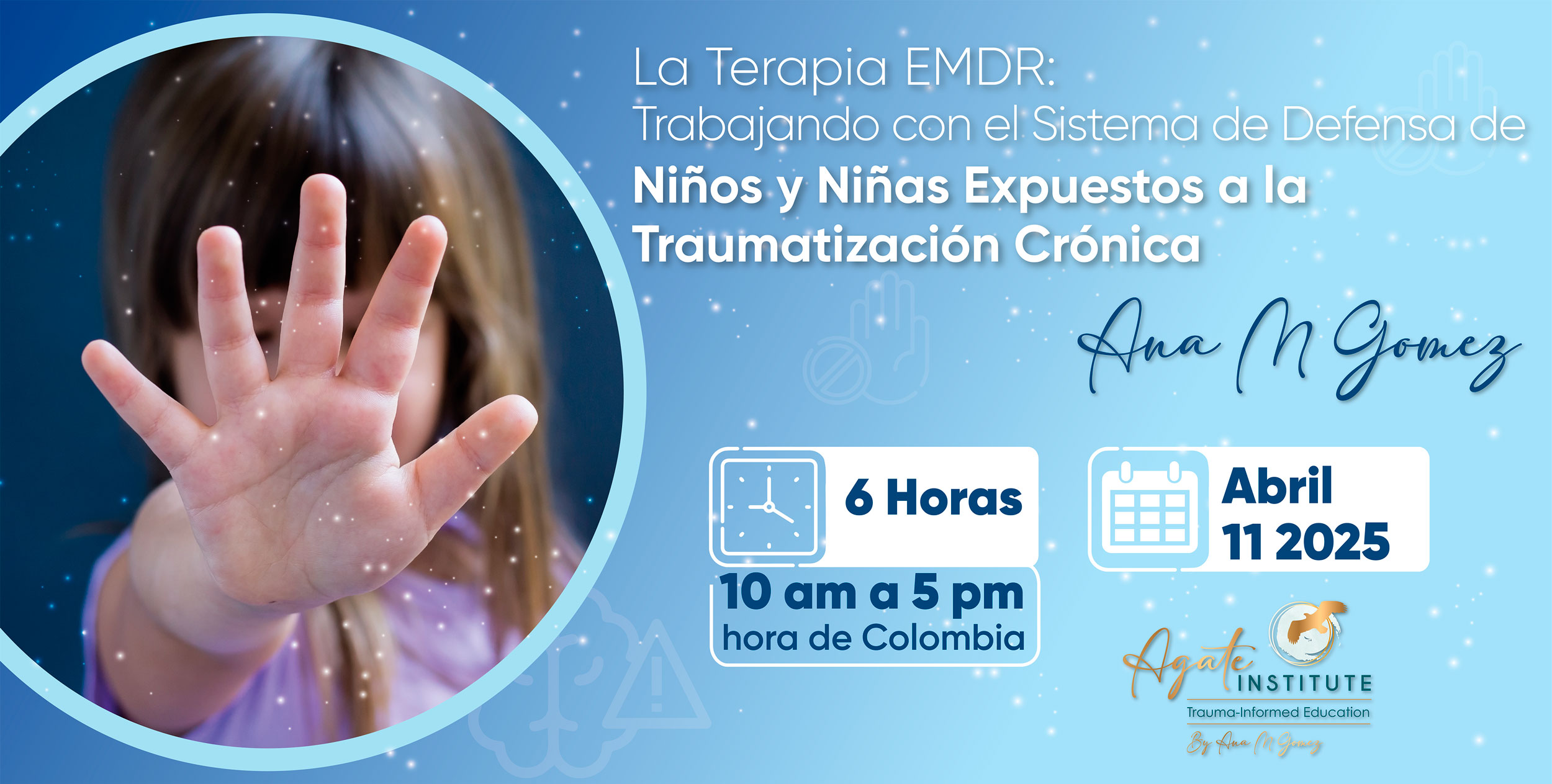
- This event has passed.
Trabajando con el Sistema de Defensa de Niños y Niñas Expuestos a la Traumatización Crónica
April 11 @ 8:00 am - 5:00 pm BMT

Entrenadora: Ana M. Gomez
Asiste en vivo o a tu propio ritmo
A 6-Hour Live Online Training
Friday, April 11th, 2025
10:00am a 5:00pm hora de Columbia
Children and adolescents affected by early and chronic trauma often develop adaptations and defenses in response to relationally impoverished and harmful environments. The human mind’s attempts to escape pain have been labeled in many ways—resistance, opposition, impossible to work with, or even untreatable. However, these defensive and protective strategies serve the critical function of survival, helping to restore homeostasis through complex psychobiological interactions.
Without adequate experiences of dyadic regulation and safety, children learn that their emotions, bodily sensations, and inner world are dangerous. This leads to trauma-related phobias and rigid forms of self-protection and defense. These trauma-driven adaptations become intertwined with traumatic memories and attachment deficits, shaping the child’s overall experience.
This presentation will expand our understanding of how a trauma-affected mind adapts to coexist with its legacies. We will explore the intricate psychobiological mechanisms underlying trauma-related defenses and examine fundamental therapeutic components for shifting from a defensive state to one of safety and homeostasis in children and adolescents.
A multimodal EMDR therapy approach will be presented, integrating psychoeducation, polyvagal-based interventions, parts work, regulation strategies, play, somatic therapies, and expressive arts while preserving the core essence of EMDR treatment.
Objetivos de Aprendizaje:
1 - 1 Hora-Comprender las Adaptaciones al Trauma:
- Reconocer las estrategias defensivas y protectoras que los niños y adolescentes desarrollan en respuesta a traumas tempranos y crónicos.
- Diferenciar entre las adaptaciones derivadas del trauma y etiquetas conductuales como resistencia u oposición.
2 - 1 Hora-Explorar los Mecanismos Psicobiológicos:
- Examinar cómo interactúan los múltiples sistemas psicobiológicos en la formación de las defensas relacionadas con el trauma.
- Comprender cómo la ausencia de regulación y seguridad diádica contribuye a mecanismos rígidos de autoprotección.
3 - 2 Horas-Mejorar las Intervenciones Clínicas:
- Identificar los componentes terapéuticos esenciales para restaurar la homeostasis y la seguridad en niños y adolescentes.
- Aprender estrategias para ayudar a los clientes afectados por el trauma a salir del estado defensivo y alcanzar la regulación.
4 - 2 Horas-Aplicar un Enfoque Multimodal de EMDR:
- Integrar la psicoeducación, intervenciones basadas en el método polivagal, trabajo con partes, estrategias de regulación, juego, terapias somáticas y artes expresivas dentro del marco de EMDR.
- Preservar la esencia del tratamiento EMDR mientras se incorporan técnicas complementarias para apoyar la sanación del trauma.
